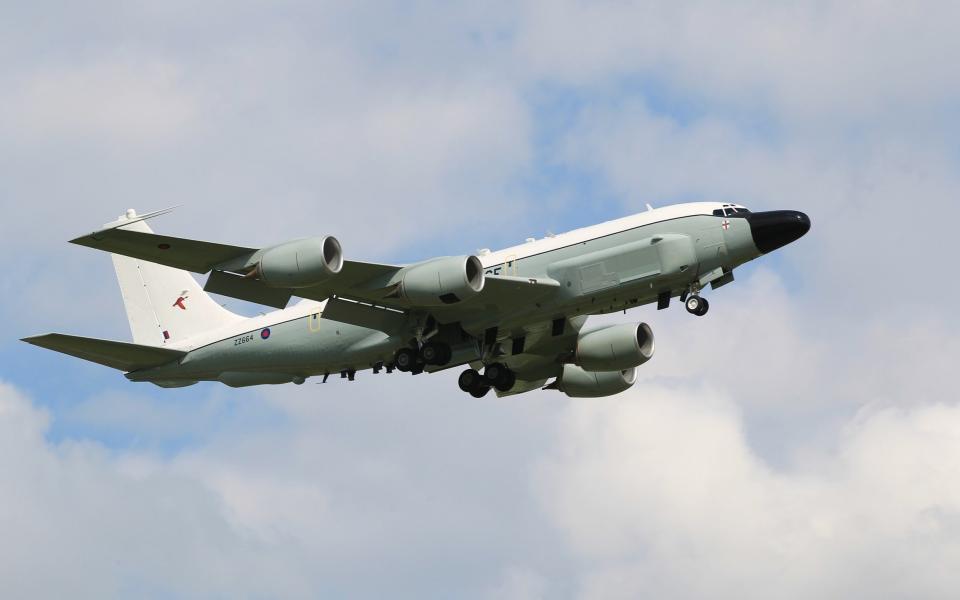Mystery US missile could be key to Ukraine retaking Kherson

When Ukraine said earlier this month that it had destroyed four Russian S-300 air-defence systems and a radar station, military analysts were stunned.
These surface-to-air missile systems (SAM) are very sophisticated and deadly pieces of equipment. Their loss will be felt keenly in Moscow and experts have been left scrambling to explain how forces in the south of the country caused such destruction.
The mystery may have been answered earlier this week, when US officials said they had supplied high-speed anti-radiation missiles (HARM) to Ukraine.
Little has been heard of this class of weapons so far in the war.
That may be about to change, given they will likely play a central role in any Ukrainian counter-attack in the south.
Like something from sci-fi
Anti-radiation missiles sound like something from science fiction; the response to a nuclear blast perhaps, used to shield civilians from atomic Armageddon.
Alas, rockets such as the AGM-88 – thought to be the weapon supplied by the US – do not work against that kind of radiation.
Instead they are designed to hone in on the radiated signals of ground-based SAM systems, searching the sky for incoming fighters.
Left intact, SAM systems deny a force air superiority and make it harder to attack other ground targets such as headquarters, airfields and ammunition depots. Destroying such sites, therefore, is a critical task in a military campaign and is called suppression of enemy air defences (SEAD).
Ukraine wants to turn recent small counter-attacks around Kherson into a broader counter-offensive to take back swathes of territory and perhaps threaten Russia’s hold on Crimea.
To be successful, Kyiv’s forces will need to own the skies, at least temporarily, so as to provide intimate support to colleagues on the ground pushing forwards.
For jets to operate unmolested, the SAM threat will first need to be removed, or at least reduced, which is where HARM missiles, travelling at around 2,300km an hour and therefore very difficult to shoot down, come in.
There are three versions of the AGM-88. Two require the jet to be able to share information with the missile, to choose a target or respond to a previously unknown threat.
Ukraine does not operate Western aircraft so cannot use these versions.
The third variant must be programmed before the jet launches. This is not ideal and relies on very good intelligence of where Russia has deployed its SAMs.

Western electronic surveillance aircraft, such as the RAF’s RC-135W Rivet Joint patrolling over the Black Sea and soaking up radar emissions from southern Ukraine to map the Russian networks, are probably helping in this regard.
When it launched the February 24 invasion, Russia’s high-altitude Su-35S and Su-30SM fighter jets conducted regular anti-radiation missile patrols, hoping to destroy Ukraine’s SAM fleet.
However, the need to stay out of range of short- and medium-range SAMs meant the Russians launched their missiles too far away from their targets.
The Ukrainian SAM operators learned that to survive they had to briefly turn off their radars. They were rendered temporarily blind, but at least they got to fight another day.
Many expensive and sophisticated Russian missiles exploded harmlessly in the countryside as a result.

The Russians will have to adopt similar tactics, conducting only pop-up engagements by briefly turning their systems on to check the skies for threats.
Russia did have four battalions of long-range S-400 SAM systems in Belarus, and other such systems in the annexed territory of Crimea. Whether they are still there, or even still exist, is not known.
To defeat these systems and take back the south, Ukraine will need to plan intricate SEAD missions as the preliminary phase of any campaign.
These missions are some of the most important of any war, but they also carry great risk.
Ukrainian jets will be deliberately flying towards fully functioning Russian SAM sites.
The situation will be made even more dangerous given Ukrainian and Russian forces operate similar SAMs and aircraft, and Ukrainian forces may also be making use of captured Russian SAMs. There will be a significant risk of friendly fire.

 Yahoo News
Yahoo News 
